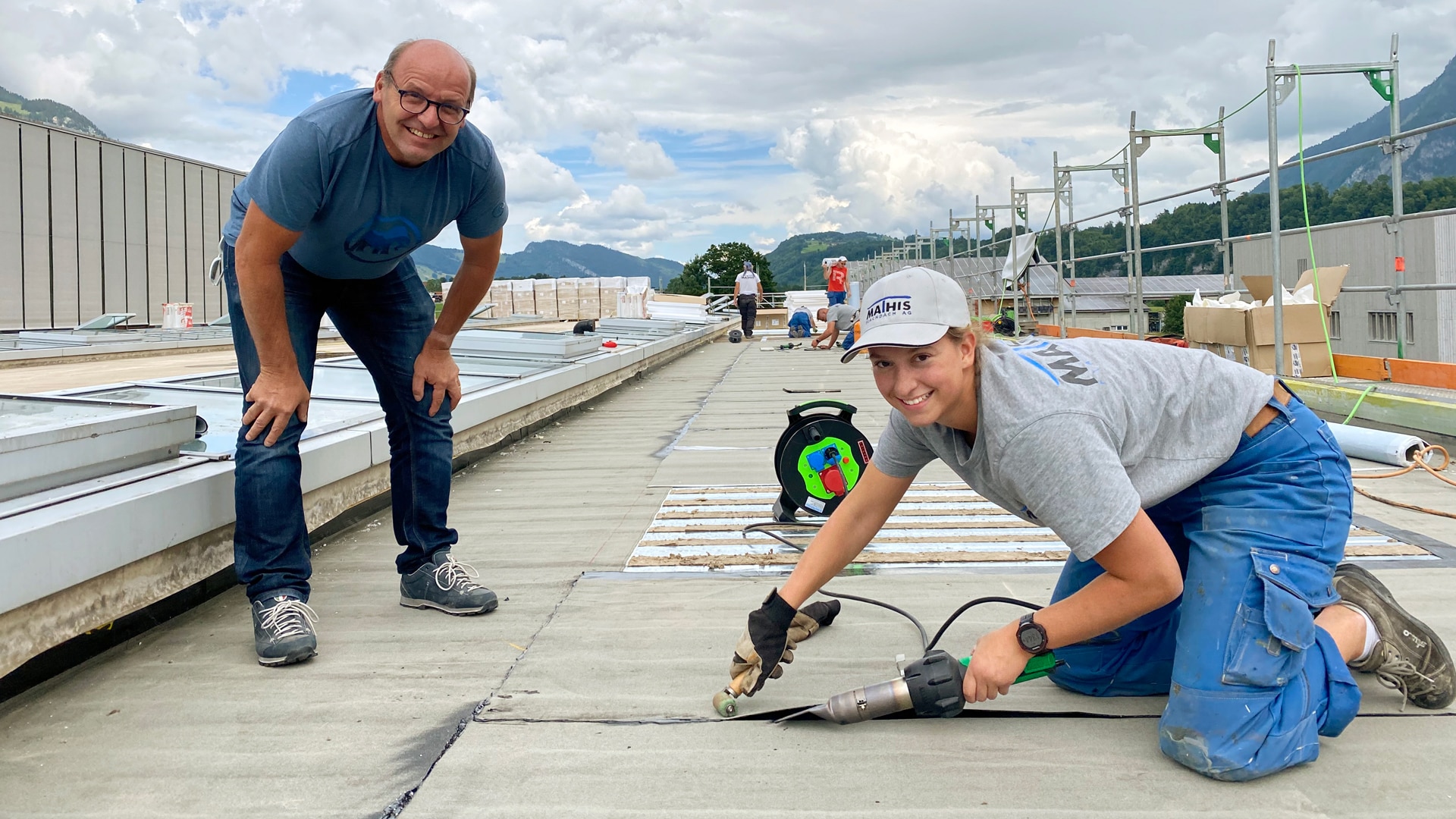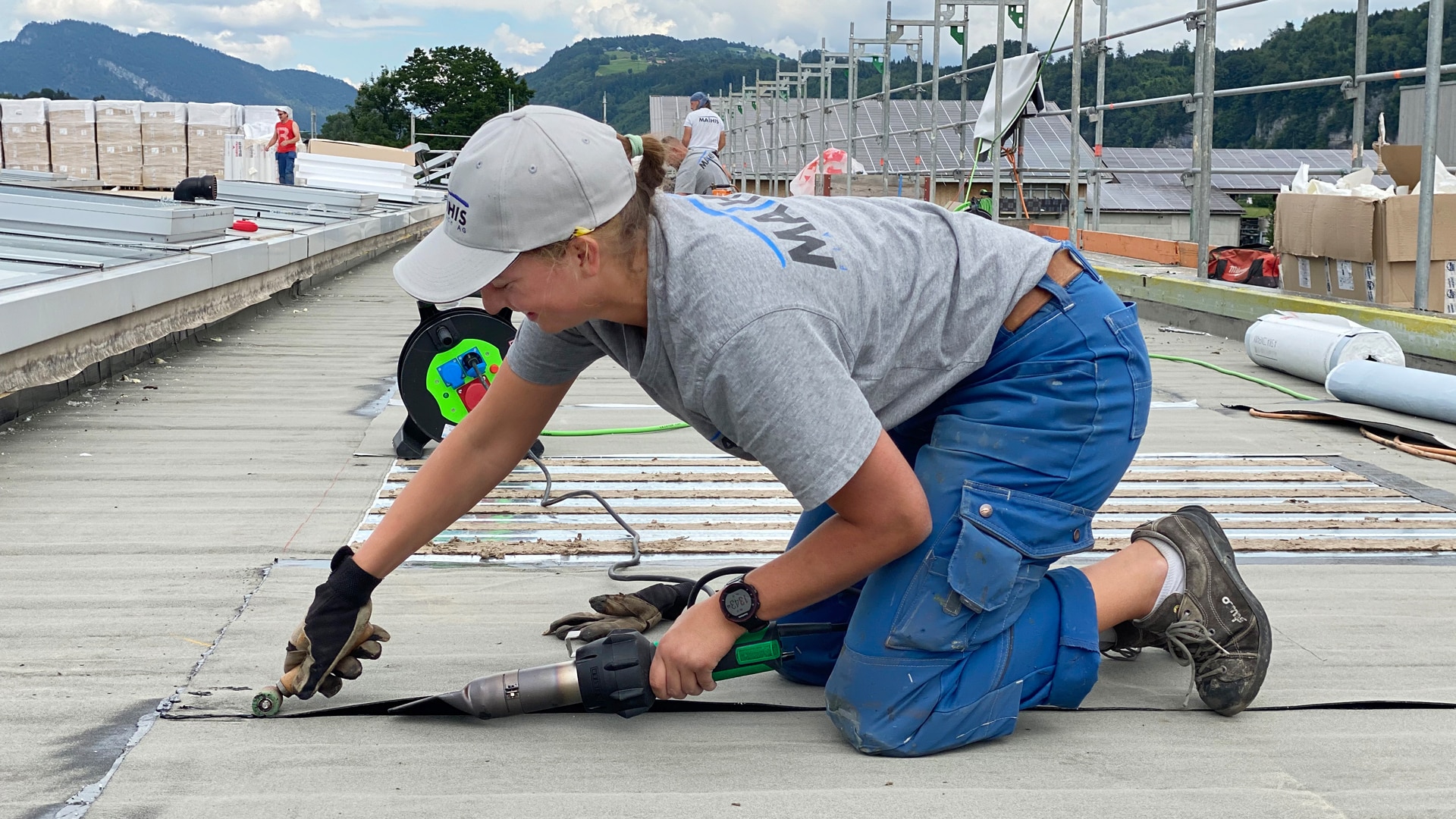With Leister – At Leister – For Leister

The roof of the Leister Group headquarters in Kägiswil, Switzerland is due for renovations at some point, like so many other roofs around the world. This welcomes the opportunity for our roofing professionals to use their equipment directly at our headquarters.

On June 18th, the clouds had dispersed and the roofing work finally began. Valérie Bergerot, from Leister's marketing department, was allowed on the roof to photograph Natascha Mathis welding the so-called vapor barrier. A big thanks to Natascha for allowing us to photograph her while working.

Simply put, the vapor barrier is an important layer of protection that is needed on every roof to prevent moisture from penetrating. Since the vapor barrier prevents too much moisture from penetrating the insulation, it is impermeable to water vapor on the inside and outside. Therefore, it is moisture-variable, which results in the following effect:
- If the humidity of the outside air is higher than that of the inside air, the vapor barrier releases the excess moisture accumulated in the insulation to the inside.
- If it is the other way round, i.e. if the humidity of the indoor air is higher than that of the outdoor air, the vapor barrier allows the moisture to diffuse outwards.